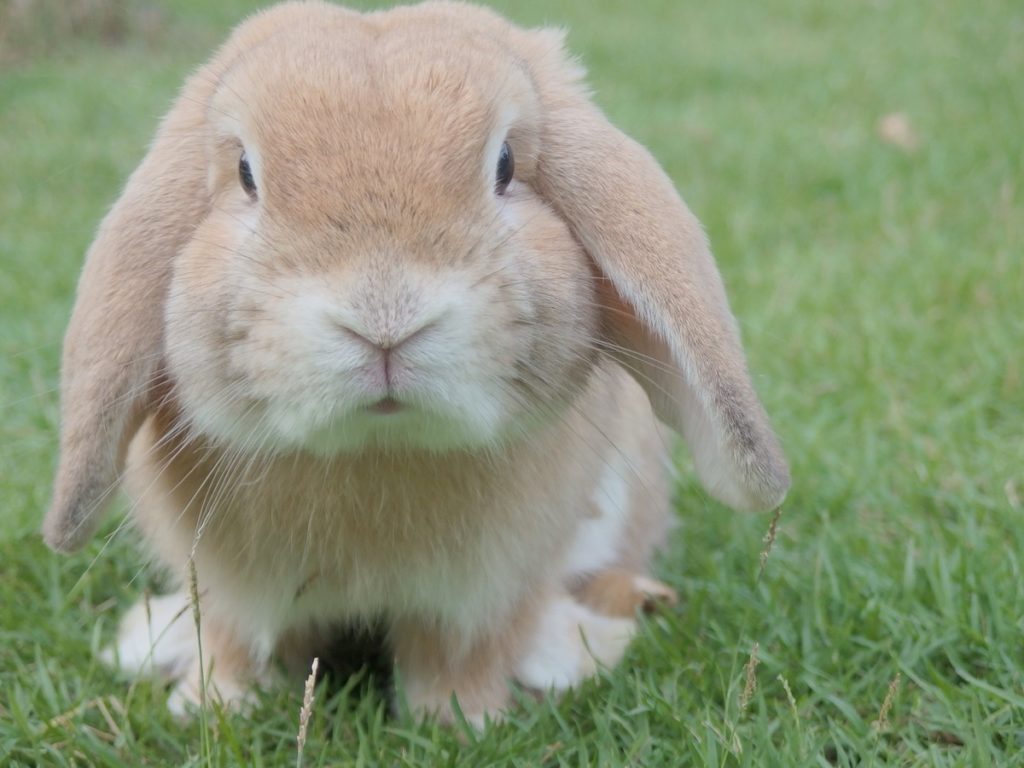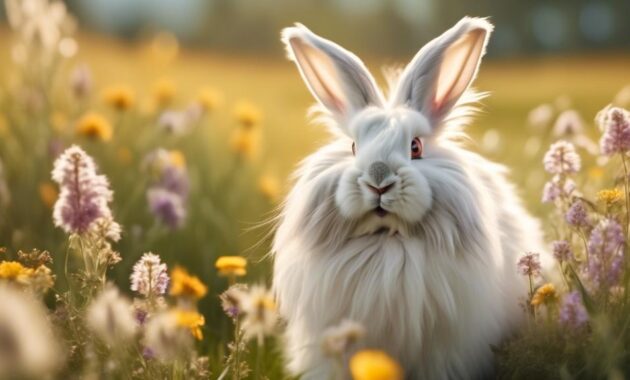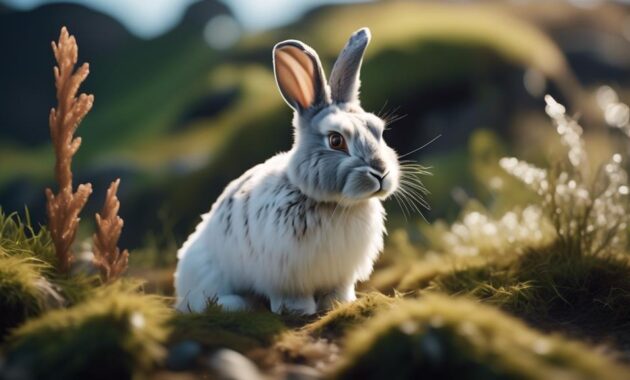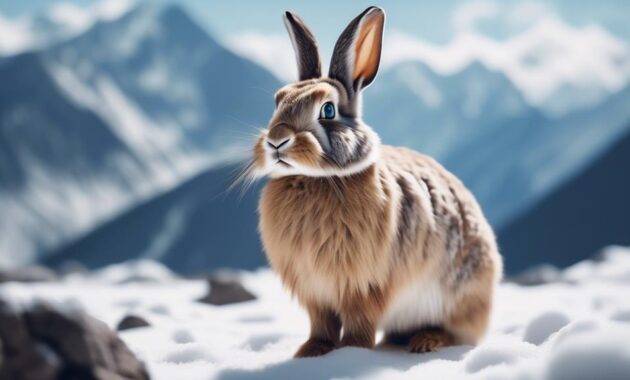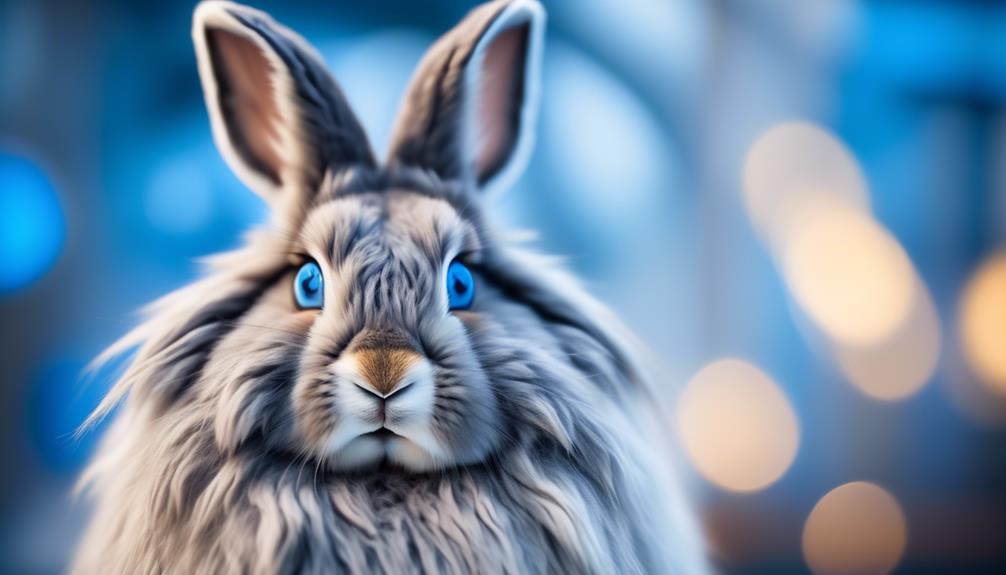
So, you think you’ve seen it all when it comes to furry and friendly pets? Well, prepare to be pleasantly surprised by the captivating Siberian rabbit breed.
These charming creatures have a lot more to offer than just their adorable appearance. From their unique temperament to their fascinating history, there’s a whole world of wonder waiting to be uncovered.
But, we won’t spoil all the fun just yet. Stick around, and we’ll delve into the enchanting world of Siberian rabbits and all the reasons why they make such incredible companions.
Get ready for a journey you won’t want to miss.
Key Takeaways
- Siberian rabbits are medium-sized, weighing between 7 to 9 lbs, and have a sleek and elegant semi-arch/mandolin body shape.
- They have a docile, easygoing, and friendly temperament, making them affectionate and social animals that form strong bonds with their owners.
- Siberian rabbits are quick learners and adaptable to their surroundings, making them easy to train and care for.
- They have a glossy and smooth coat with a wide range of color options, including blue, brown, black, and lilac, and require regular grooming to keep their fur healthy and shiny.
Size and Lifespan
The Siberian rabbit breed is a medium-sized breed with a weight range of 7 to 9 lbs and a lifespan of 5+ years. These rabbits have a semi-arch/mandolin body shape, which gives them a sleek and elegant appearance.
With their docile, easygoing, and friendly temperament, they make wonderful companions. They’re known to be affectionate and social, always ready for a cuddle or a playtime session.
Their intelligence is another remarkable trait, making them quick learners and easy to train.
Bred in the UK around 1930 for the fur trade, the Siberian rabbit breed faced a decline in popularity after World War II. However, they’re now protected by the ARBA and BRC and are kept as show animals and pets.
Body Shape and Temperament
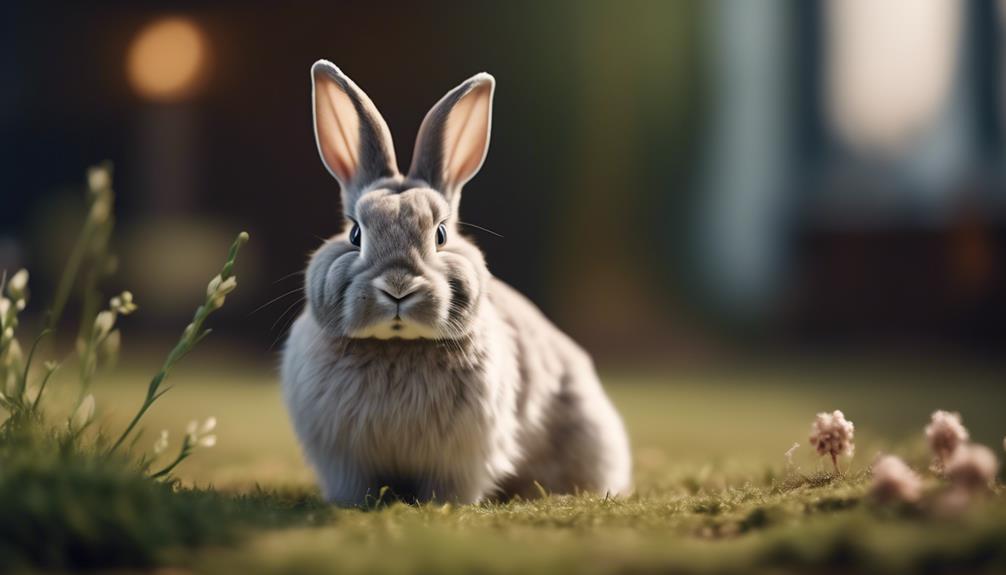
As we turn our focus to the body shape and temperament of the Siberian rabbit breed, let’s explore their unique characteristics that contribute to their charm as companions. Siberian rabbits are medium-sized, weighing between 7-9 lbs, and have a distinctive semi-arch/mandolin body shape. This shape adds to their elegant appearance. In terms of temperament, Siberians are known for being docile, easygoing, and friendly. They are affectionate and social animals, forming strong bonds with their owners. Their intelligence allows them to quickly learn and adapt to their surroundings. These qualities make them excellent companions for both adults and children. The following table summarizes the body shape and temperament of the Siberian rabbit breed:
| Body Shape | Temperament | |
|---|---|---|
| Characteristics | Semi-arch/mandolin body shape | Docile, easygoing, friendly |
Breed History and Popularity
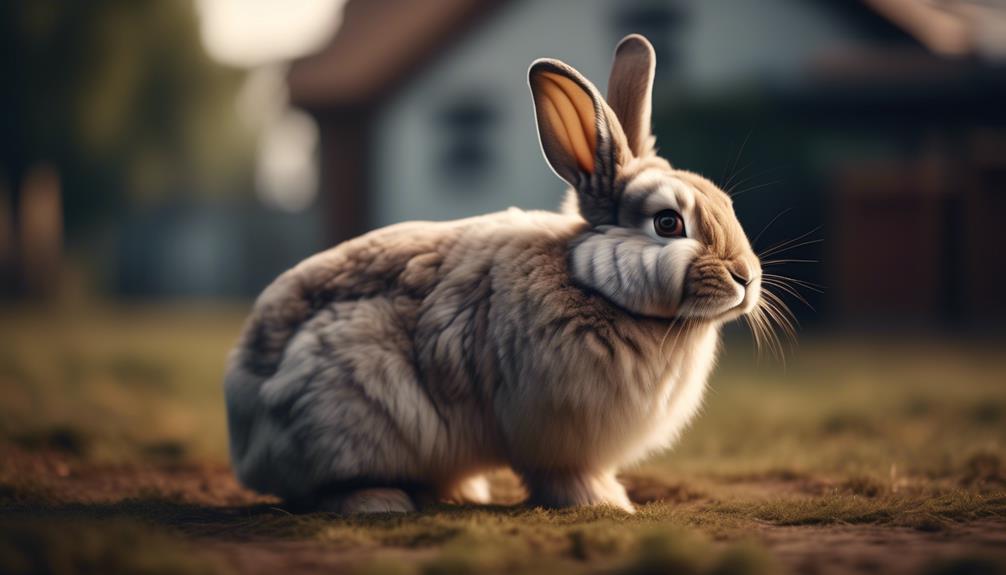
Developed in the UK around 1930, the Siberian rabbit breed was originally bred for the fur trade. However, after World War II, the breed’s popularity declined. Despite this, the Siberian rabbit breed is still protected by both the American Rabbit Breeders Association (ARBA) and the British Rabbit Council (BRC).
Today, they’re kept as show animals and pets. With their docile, easygoing, and friendly temperament, Siberian rabbits make great companions. They’re affectionate and social, enjoying human interaction. Their intelligence adds to their appeal as pets.
Siberian rabbits have a medium-sized, semi-arch/mandolin body shape and weigh between 7-9 lbs. Their coat is glossy, smooth, and dense, with colors including blue, brown, black, and lilac.
The breed’s fascinating history and charming qualities make them a popular choice for rabbit enthusiasts today.
Coat and Colors
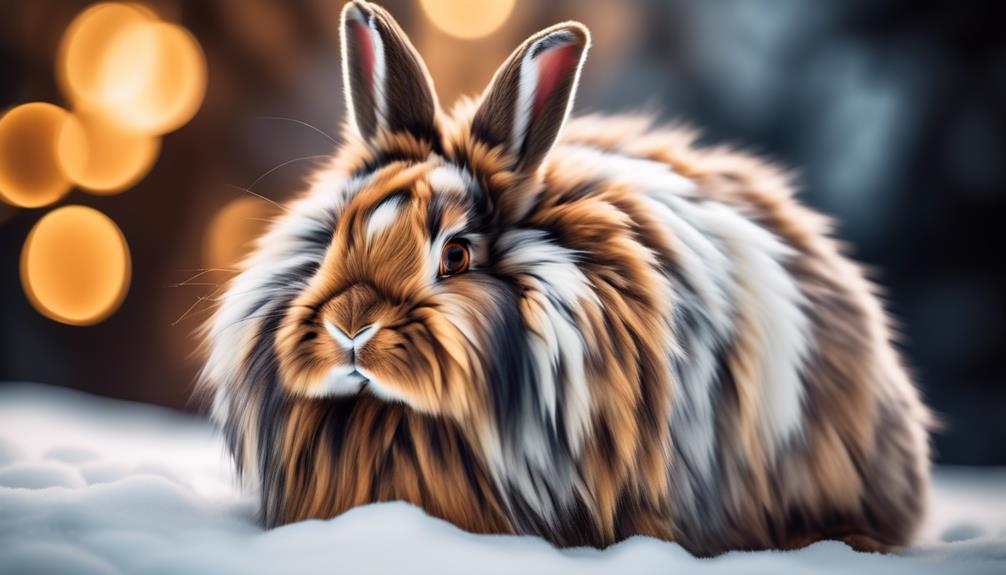
With a glossy, smooth, and dense coat, the Siberian rabbit breed comes in various colors including blue, brown, black, and lilac.
Here are some key characteristics of their coat and colors:
- Glossy and smooth: The Siberian rabbit’s coat has a shiny appearance and feels soft to the touch. It’s a pleasure to stroke and cuddle with these rabbits.
- Dense fur: Their coat is thick and plush, providing excellent insulation. This helps them stay warm in colder temperatures.
- Various colors: Siberian rabbits display a wide range of colors, offering something for every preference. From the subtle elegance of lilac to the striking intensity of black, there’s a color to suit every taste.
- Evenly distributed and obvious flecking: The colors on their fur are evenly distributed, creating a harmonious and balanced look. Additionally, some rabbits may have flecks or spots of a different color, adding a unique touch to their appearance.
Care Requirements
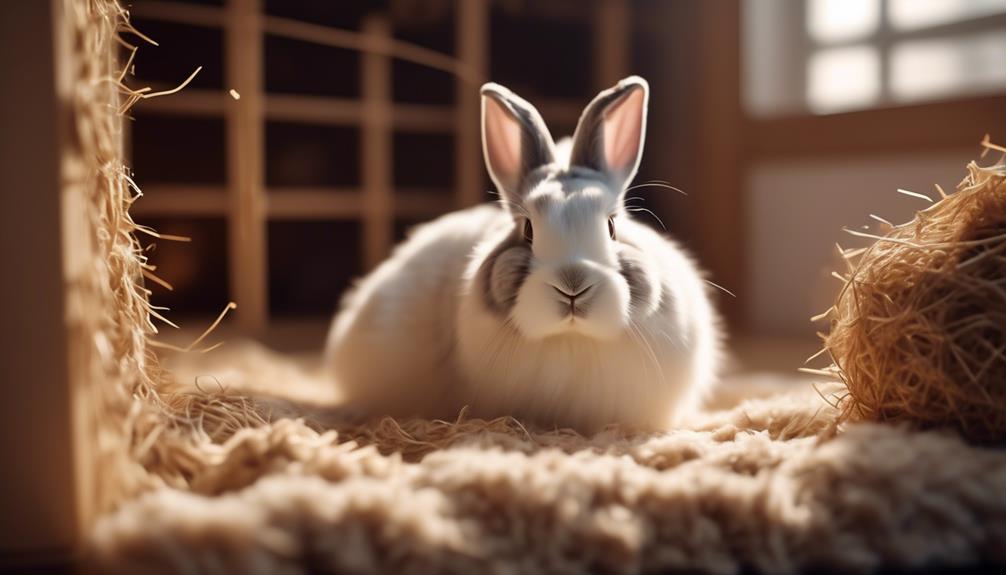
To properly care for a Siberian rabbit, it is important to ensure their housing is suitable and their diet is well-balanced. Outdoor hutches should be protected from the elements, while indoor housing should be rabbit-proofed to prevent any accidents or escapes. A varied diet of pellets, veggies, and hays should be provided to meet their nutritional needs. It is essential to monitor their teeth and ensure they are kept at the appropriate length, as overgrown teeth can lead to health issues. Regular vaccinations and prevention of viral infections and colds are also necessary for their overall well-being. By providing the right care and attention, you can ensure that your Siberian rabbit remains happy and healthy.
| Care Requirements | |
|---|---|
| Housing | – Suitable outdoor hutch protected from elements<br>- Rabbit-proofed indoor housing |
| Diet | – Varied diet of pellets, veggies, and hays |
| Health | – Regular monitoring and maintenance of teeth<br>- Vaccinations and prevention of viral infections and colds |
Outdoor Housing
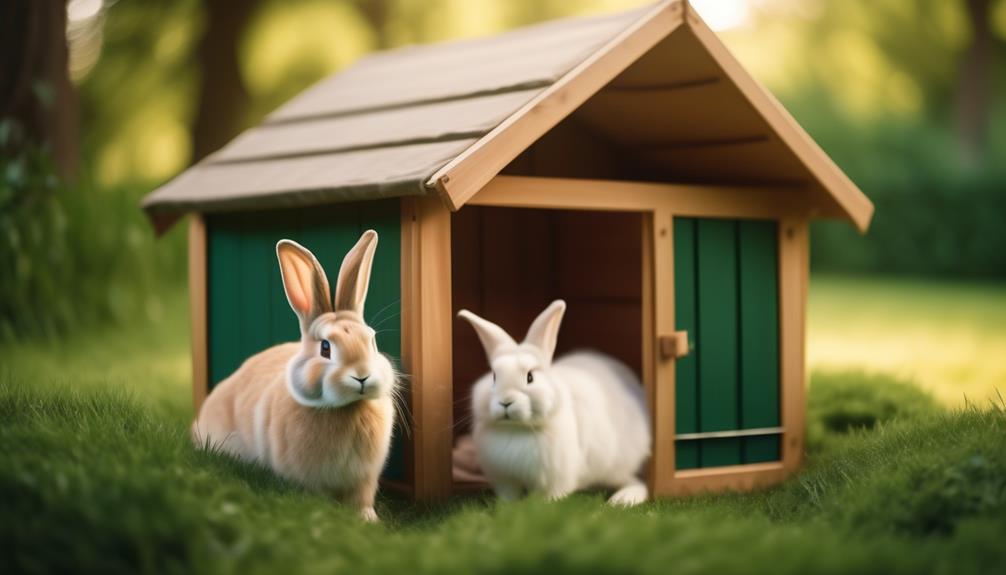
When providing outdoor housing for a Siberian rabbit, it’s important to ensure that their living space is protected from the elements. Here are four key considerations for creating a suitable outdoor habitat:
- Shelter: Provide a sturdy and well-insulated hutch to protect your Siberian rabbit from rain, wind, and extreme temperatures. The hutch should have a solid roof and walls, with a raised floor to keep them dry.
- Flooring: Use a solid material, such as wood or plastic, for the hutch floor to prevent the rabbit’s feet from getting wet or injured. Avoid wire flooring, as it can cause discomfort and potential health issues.
- Ventilation: Ensure proper airflow within the hutch to prevent heat buildup and condensation. Install vents or mesh panels to maintain fresh air circulation without exposing the rabbit to drafts.
- Security: Implement sturdy locks and latches on the hutch to protect your rabbit from predators. Additionally, provide a secure outdoor run or play area where they can exercise safely.
Indoor Housing
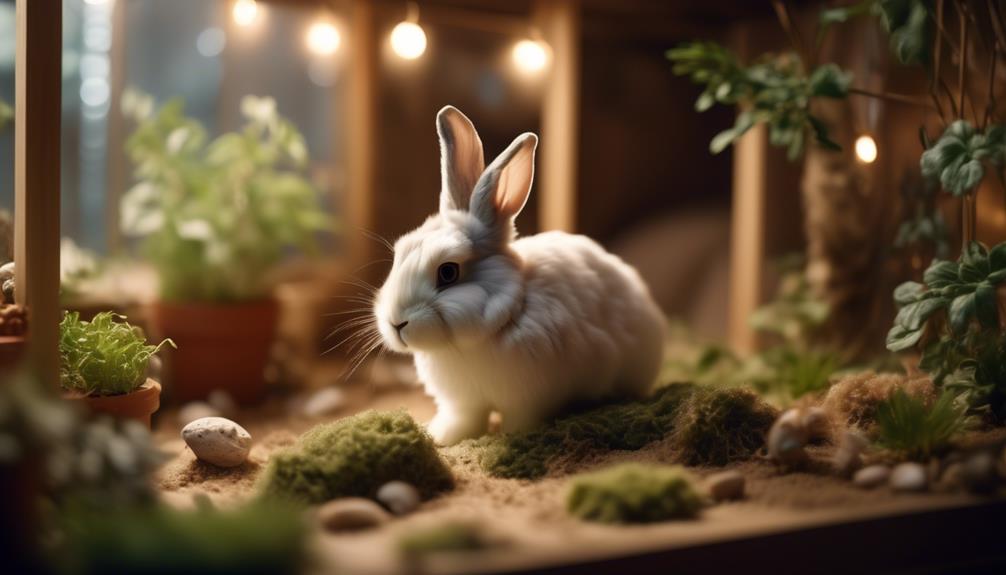
For optimal living conditions, consider providing your Siberian rabbit with suitable indoor housing. Indoor housing offers protection from the elements and allows for easier monitoring and interaction with your pet. Here are some important factors to consider when setting up your rabbit’s indoor space:
| Factor | Description |
|---|---|
| Cage Size | Provide a cage that is at least 4 square feet in size to allow for movement and exercise. |
| Bedding | Use a soft bedding material such as straw or shredded paper to ensure comfort and cleanliness. |
| Hideouts | Include hideouts in the cage for your rabbit to retreat to and feel safe. These can be tunnels, boxes, or igloos. |
| Litter Box | Train your rabbit to use a litter box to maintain cleanliness. Place it in a corner of the cage. |
| Toys | Provide toys such as chew sticks and interactive puzzles to keep your rabbit mentally stimulated and entertained. |
Diet and Nutrition
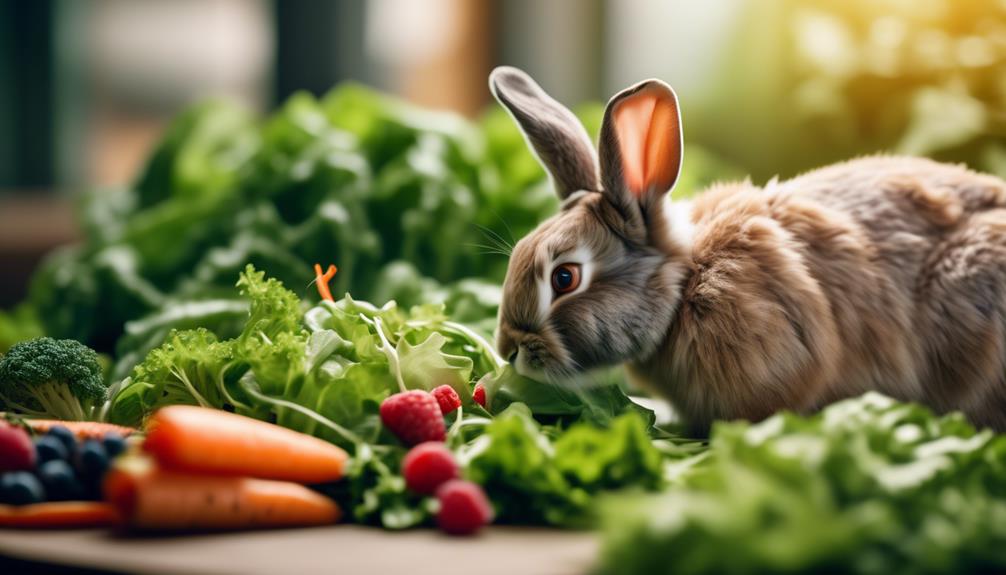
A balanced diet is essential for the health and well-being of your Siberian rabbit. To ensure your furry friend gets the nutrition they need, consider the following:
- Pellets: Choose high-quality rabbit pellets that are specifically formulated for their dietary needs. These pellets should be the main component of their diet.
- Veggies: Offer a variety of vegetables such as leafy greens, carrots, and bell peppers. These provide essential vitamins and minerals.
- Hay: Provide unlimited access to fresh, high-quality hay, such as timothy or orchard grass. This helps keep their teeth healthy and aids in digestion.
- Treats: Offer treats sparingly, as they can be high in sugar. Opt for small amounts of fruits or herbs that are safe for rabbits, like apple slices or cilantro.
Remember to always provide fresh water and consult with a veterinarian for specific dietary recommendations for your Siberian rabbit.
Dental Care
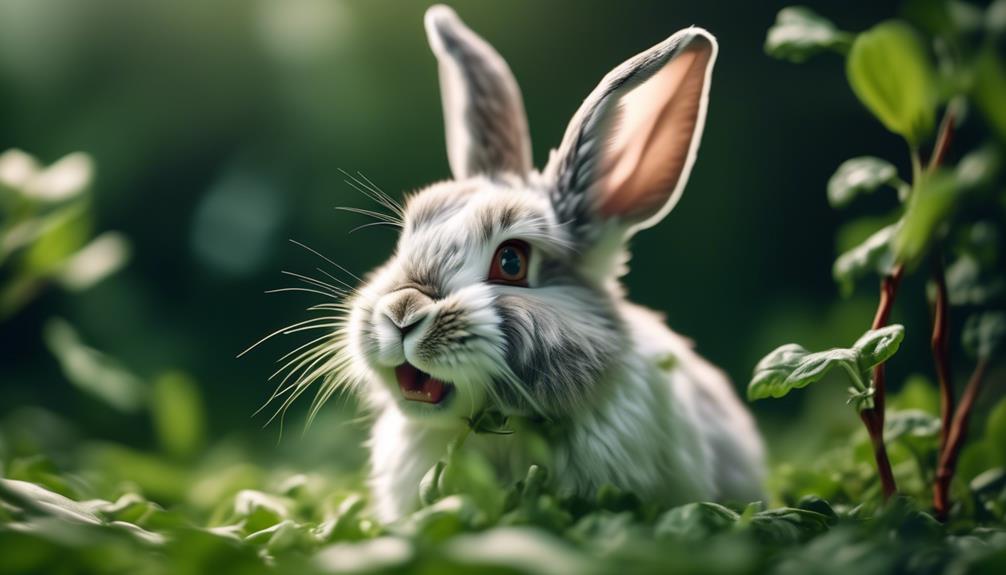
To ensure optimal oral health for your Siberian rabbit, regular dental care is essential. Just like humans, rabbits also need to have their teeth monitored and kept at an appropriate length. Rabbits have continuously growing teeth, and if they become too long, it can lead to dental problems and discomfort. To help you understand the importance of dental care for your furry friend, here is a table highlighting the key aspects of rabbit dental care:
| Dental Care Tips for Your Siberian Rabbit | |
|---|---|
| Provide Chew Toys | Chewing on appropriate toys helps wear down your rabbit’s teeth naturally. |
| Monitor Teeth Length | Regularly check your rabbit’s teeth to ensure they are not overgrown. |
| Balanced Diet | Feed your rabbit a balanced diet of hay, vegetables, and pellets to promote good dental health. |
Vaccinations and Health
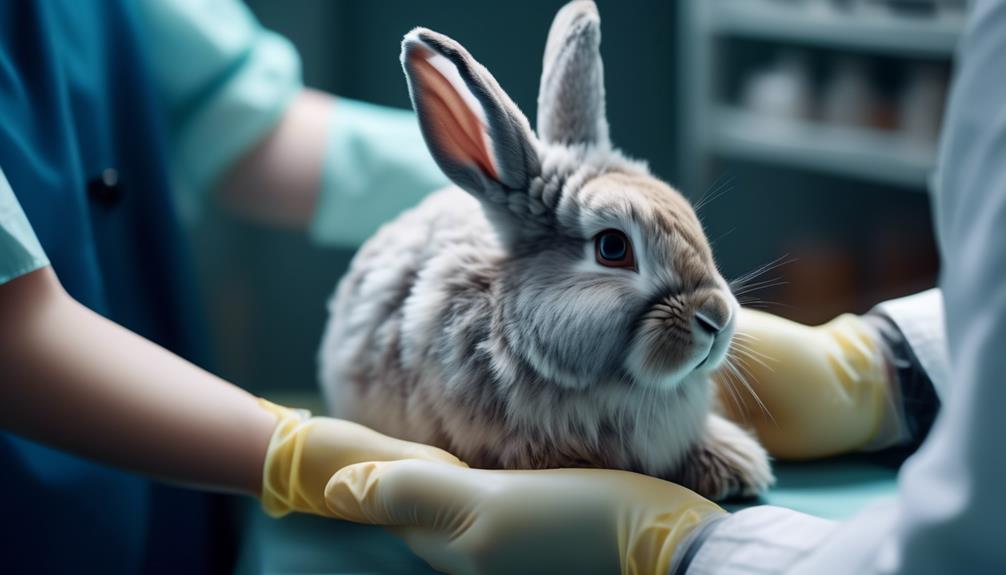
Regular dental care is crucial for the overall health and well-being of your Siberian rabbit. It’s equally important to ensure their vaccinations and health are properly taken care of. Here are four important things to know about vaccinations and health for your furry companion:
- Vaccinations: It’s essential to keep your Siberian rabbit up to date on vaccinations to protect them from common diseases such as myxomatosis and rabbit viral hemorrhagic disease (RVHD). Consult with your veterinarian to determine which vaccines are necessary and when they should be administered.
- Prevention of Viral Infections: Along with vaccinations, proper hygiene and cleanliness are key to preventing viral infections. Regularly clean your rabbit’s living area, provide a balanced diet rich in nutrients, and minimize contact with other animals to reduce the risk of infections.
- Cold Prevention: Siberian rabbits are susceptible to colds, so it’s crucial to keep them warm and protected from drafts. Provide a cozy and well-insulated living space, especially during colder months, and monitor their health closely for any signs of respiratory issues.
- Regular Health Check-ups: Schedule regular check-ups with a rabbit-savvy veterinarian to monitor your Siberian rabbit’s overall health. This includes dental examinations, as dental problems can lead to serious health issues.
Grooming and Maintenance
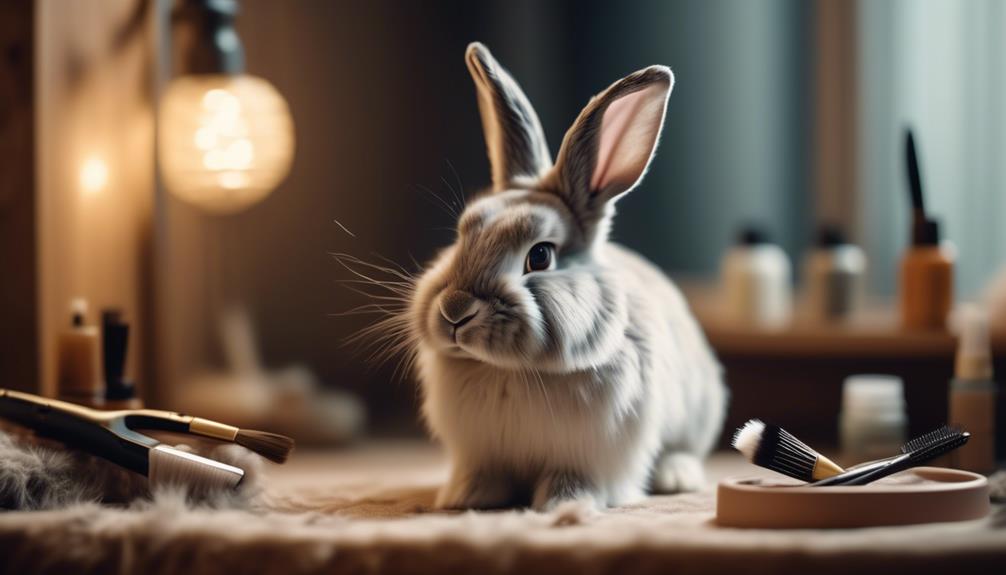
Grooming and maintaining your Siberian rabbit’s coat is essential for their overall health and appearance. With their glossy, smooth, and dense coat, it’s important to regularly brush their fur to prevent matting and remove loose hairs. This will also help to distribute natural oils, keeping their coat healthy and shiny.
Additionally, checking for any signs of parasites, such as fleas or mites, is crucial during grooming sessions. Trimming their nails regularly is also necessary to prevent overgrowth and discomfort.
It’s recommended to provide a safe and comfortable space for grooming, such as a grooming table or a soft towel on a flat surface.
Training and Socialization
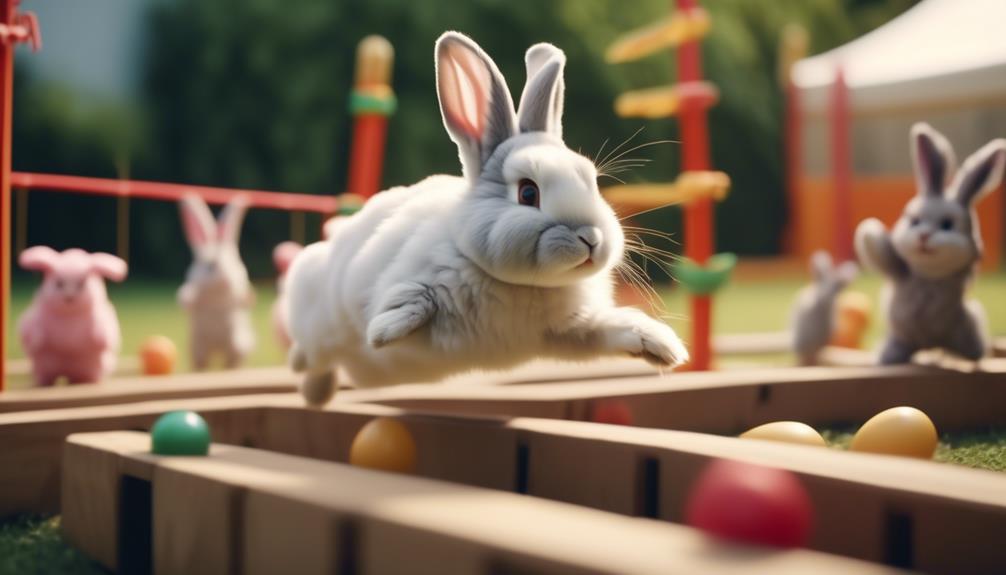
Training and socializing your Siberian rabbit is essential for their well-being and overall behavior. Here are four important aspects to consider:
- Start early: Begin training and socializing your rabbit from a young age to establish good habits and positive behaviors. This will help them grow into well-adjusted and friendly adults.
- Positive reinforcement: Use rewards, such as treats or praise, to encourage desired behaviors. Avoid punishment, as it can cause fear and anxiety in your rabbit.
- Handling and social interaction: Regularly handle your rabbit gently to help them become comfortable with human touch. Introduce them to different people and animals to promote sociability and reduce shyness.
- Mental stimulation: Provide your rabbit with toys, tunnels, and puzzle feeders to keep them mentally stimulated and prevent boredom. This will help prevent destructive behaviors and promote a happy, well-rounded rabbit.
Frequently Asked Questions
Are Siberian Rabbits Hypoallergenic?
Siberian rabbits are not hypoallergenic. They have a dense and glossy coat that can cause allergies in sensitive individuals. It’s important to consider this if you or someone in your household has allergies.
Do Siberian Rabbits Require a Lot of Exercise?
No, Siberian rabbits do not require a lot of exercise. They are a medium-sized breed with a docile temperament. However, it is still important to provide them with enough space to hop around and explore.
Can Siberian Rabbits Be Kept as Outdoor Pets?
Yes, Siberian rabbits can be kept as outdoor pets. Just make sure their outdoor hutch is protected from the elements. They also need a varied diet, regular teeth monitoring, and vaccinations to ensure their health.
Are There Any Specific Health Issues That Siberian Rabbits Are Prone To?
Siberian rabbits are generally healthy, but they can be prone to dental problems if their teeth are not properly monitored. It’s important to keep up with vaccinations and prevent viral infections and colds.
Can Siberian Rabbits Be Litter Trained?
Yes, Siberian rabbits can be litter trained. Provide a litter box with rabbit-safe litter and place their droppings in it to encourage them. Be consistent with training and reward them for using the box.
What Makes Siberian Rabbits Different from Polish Rabbits?
Siberian rabbits are known for their thick, lush fur that helps them thrive in cold climates, while Polish rabbits with distinctive charm have a more petite build and shorter ears. The Siberian rabbits typically have a calm and gentle temperament, while the Polish rabbits are known for their energetic and playful nature.
Conclusion
So if you’re looking for a furry and friendly companion, the Siberian rabbit breed is an excellent choice. With their docile temperament, beautiful coat, and medium size, these rabbits make wonderful pets.
They have a lifespan of 5+ years and are protected and cherished by organizations like the ARBA and BRC. With proper care, including dental care, vaccinations, grooming, and training, these furry companions will bring joy and warmth to your life for years to come.

